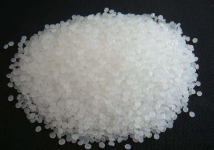read: 1063 time:2025-07-03 09:20:46 from:化易天下
Introduction to Pyridine and Aromaticity
Pyridine is a basic heterocyclic organic compound with the chemical formula C₅H₅N. It is structurally similar to benzene, with one of the CH groups replaced by a nitrogen atom. The question "why pyridine is aromatic" is fundamental in organic chemistry, particularly when studying the properties and behavior of heterocyclic compounds. Aromaticity is a key concept that helps explain the stability and reactivity of many organic molecules, including pyridine.
Understanding Aromaticity
Aromaticity is a concept in organic chemistry that describes the unusually stable nature of certain cyclic compounds. For a molecule to be considered aromatic, it must satisfy several criteria, often summarized by Hückel's rule:
Pyridine meets all these criteria, which is why pyridine is aromatic.
Pyridine’s Planarity and Conjugation
One of the main reasons why pyridine is aromatic is its planar structure. Pyridine has a six-membered ring, similar to benzene, where all the atoms lie in the same plane. This planarity is crucial because it allows the p-orbitals on each carbon and nitrogen atom to overlap effectively, creating a conjugated π-electron system across the ring.
In pyridine, the nitrogen atom contributes one lone pair of electrons that resides in an sp² hybridized orbital, perpendicular to the plane of the ring. This means that the lone pair does not participate in the conjugated π-system, ensuring that the necessary electron delocalization across the ring is maintained.
Hückel’s Rule and Pyridine’s Aromaticity
The application of Hückel's rule is another critical aspect of understanding why pyridine is aromatic. According to Hückel's rule, for a molecule to be aromatic, it must have (4n + 2) π-electrons in the conjugated system. Pyridine, with its six-membered ring, possesses six π-electrons—one from each of the five carbon atoms and one from the nitrogen atom.
These six π-electrons satisfy Hückel’s rule (where n = 1, giving 4(1) + 2 = 6 π-electrons), confirming that pyridine is indeed aromatic. This electron configuration contributes significantly to the stability of the pyridine molecule, much like the aromatic benzene ring.
Impact of Nitrogen on Pyridine’s Aromaticity
The presence of nitrogen in pyridine's ring structure is a crucial factor in understanding why pyridine is aromatic. Nitrogen is more electronegative than carbon, which slightly alters the electron distribution within the ring. However, this does not disrupt the aromaticity; instead, it makes pyridine less reactive than benzene in electrophilic aromatic substitution reactions but more reactive in nucleophilic substitutions.
Nitrogen’s lone pair, as mentioned earlier, is located in an sp² orbital, and it does not interfere with the π-system. This configuration ensures that pyridine maintains the required 6 π-electrons for aromaticity while also contributing to the basicity of the molecule, allowing pyridine to act as a weak base.
Conclusion
In summary, the question "why pyridine is aromatic" can be answered by examining its structure and electron configuration. Pyridine is aromatic because it satisfies all the criteria of aromaticity: it is planar, cyclic, conjugated, and follows Hückel's rule with 6 π-electrons. The presence of nitrogen in the ring enhances its chemical properties without disrupting the aromatic nature, making pyridine a stable and unique aromatic compound in organic chemistry. Understanding these aspects of pyridine’s structure and behavior is essential for grasping its role in various chemical reactions and applications.

Jincheng Petrochemical's 300000 ton polypropylene plant successfully trial production, 2024 polypropylene market analysis

The ABS market remains sluggish, what is the future direction?

Market differentiation of bisphenol A intensifies: prices rise in East China, while prices generally decline in other regions

The production method and process flow of silicone acrylic lotion, and what are the common raw materials